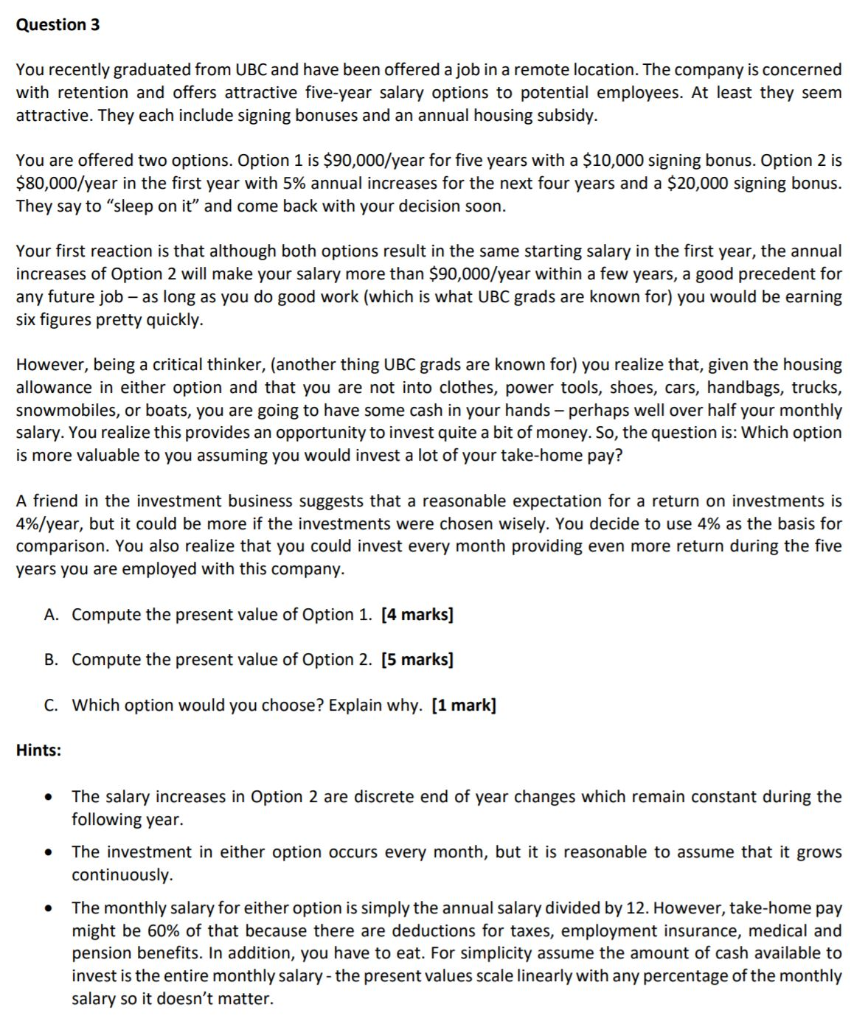
Question 3 You recently graduated from UBC and have been offered a job in a remote location. The company is concerned with retention and offers attractive five-year salary options to potential employees. At least they seem attractive. They each include signing bonuses and an annual housing subsidy. You are offered two options. Option 1 is $90,000/year for five years with a $10,000 signing bonus. Option 2 is $80,000/year in the first year with 5% annual increases for the next four years and a $20,000 signing bonus. They say to "sleep on it" and come back with your decision soon. Your first reaction is that although both options result in the same starting salary in the first year, the annual increases of Option 2 will make your salary more than $90,000/year within a few years, a good precedent for any future job - as long as you do good work (which is what UBC grads are known for) you would be earning six figures pretty quickly. However, being a critical thinker, (another thing UBC grads are known for) you realize that, given the housing allowance in either option and that you are not into clothes, power tools, shoes, cars, handbags, trucks, snowmobiles, or boats, you are going to have some cash in your hands - perhaps well over half your monthly salary. You realize this provides an opportunity to invest quite a bit of money. So, the question is: Which option is more valuable to you assuming you would invest a lot of your take-home pay? A friend in the investment business suggests that a reasonable expectation for a return on investments is 4%/year, but it could be more if the investments were chosen wisely. You decide to use 4% as the basis for comparison. You also realize that you could invest every month providing even more return during the five years you are employed with this company. A. Compute the present value of Option 1. [4 marks] B. Compute the present value of Option 2. (5 marks] C. Which option would you choose? Explain why. [1 mark] Hints: The salary increases in Option 2 are discrete end year changes which remain constant during the following year. The investment in either option occurs every month, but it is reasonable to assume that it grows continuously. The monthly salary for either option is simply the annual salary divided by 12. However, take-home pay might be 60% of that because there are deductions for taxes, employment insurance, medical and pension benefits. In addition, you have to eat. For simplicity assume the amount of cash available to invest is the entire monthly salary - the present values scale linearly with any percentage of the monthly salary so it doesn't matter







